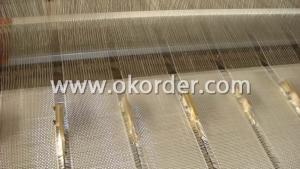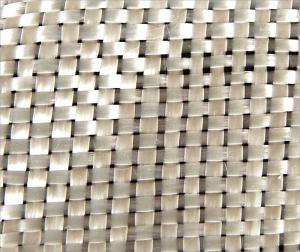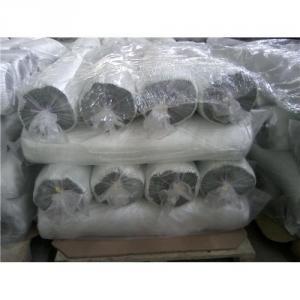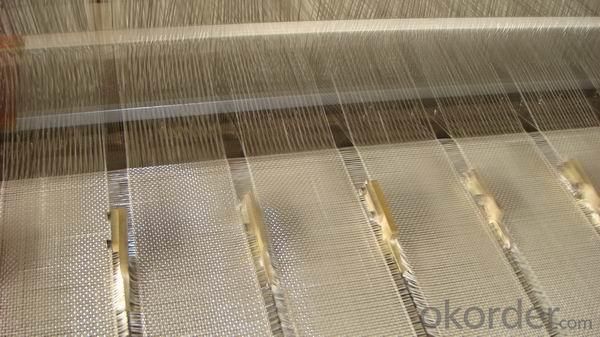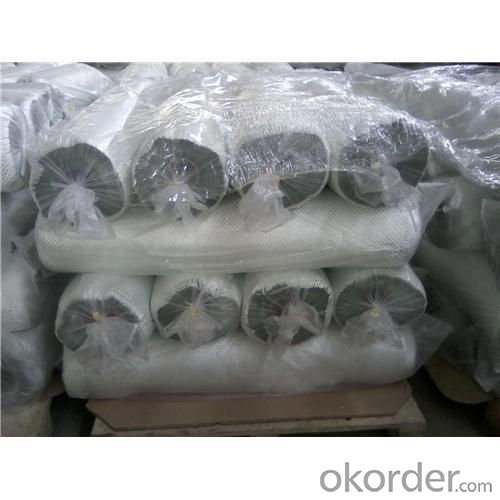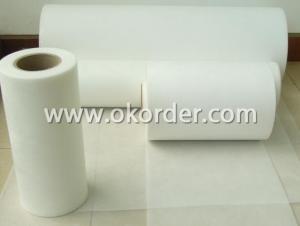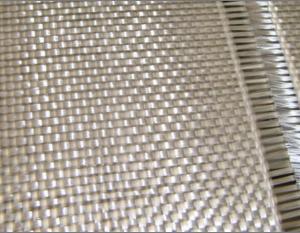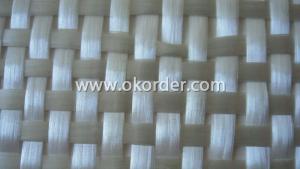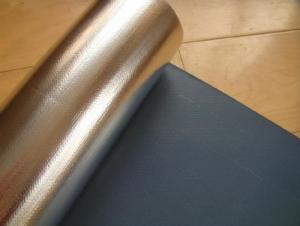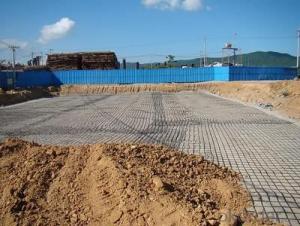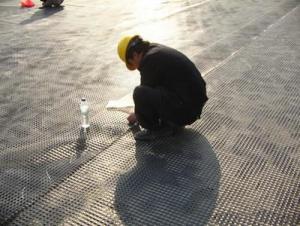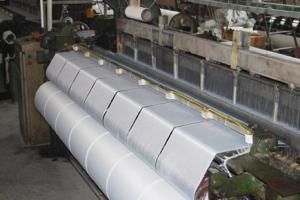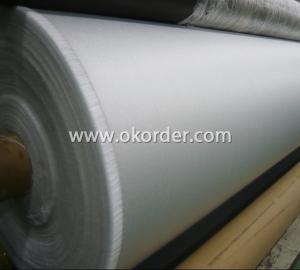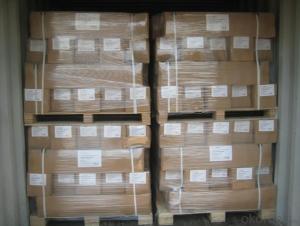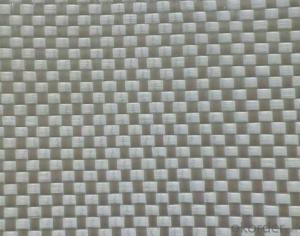Fiberglass Fabrics Ewr360-380g/m2
- Loading Port:
- China Main Port
- Payment Terms:
- TT or LC
- Min Order Qty:
- 10Ton kg
- Supply Capability:
- 100TON PER TON kg/month
OKorder Service Pledge
OKorder Financial Service
You Might Also Like
Specifications of EWR360-380G/M2
1.Weight:360-380g/m2
2.Width:90cm
3.Length:100meter/roll
4.Packing:Plastic bag + Plastic woven bag
Characteristics of EWR360-380G/M2
1.Low Fuzz,dirt,impurity and other stains.
2. Fast wet-out.
3. Even thickness
4.Good covering
5.Passed ISO9001,ISO14001
Application of EWR360-380G/M2
a) boats ,vessels ,plane
b) automotive parts ,furniture and sports facilities
c) resins system,such as polyeser,vinylester and epoxy resins
<IMG title=EWR360-380G/M2 alt=EWR360-380G/M2 src="https://file2.okorder.com/prod/2013/12/12/0fe9e6e5c192f505a80fe749302d42e4/97629bbe0f243153ffc9c620d481059c.jpg" _src="https://file2.okorder.com/prod/2013/12/12/0fe9e6e5c192f505a80fe749302d42e4/97629bbe0f243153ffc9c620d481059c.jpg">
<IMG title=EWR360-380G/M2 alt=EWR360-380G/M2 src="https://file2.okorder.com/prod/2013/12/12/9892a2f3166ed0d08f5f9768de96b58d/cfad0ded1db7312d1d8f171c98b6f1d8.jpg" _src="https://file2.okorder.com/prod/2013/12/12/9892a2f3166ed0d08f5f9768de96b58d/cfad0ded1db7312d1d8f171c98b6f1d8.jpg">
- Q: Can fiberglass fabric be used for making tarpaulins?
- Yes, fiberglass fabric can be used for making tarpaulins. Fiberglass is known for its high strength and durability, making it an excellent choice for creating tarpaulins that can withstand harsh weather conditions and provide effective protection. Additionally, fiberglass fabric is resistant to tearing, UV rays, and chemicals, making it a reliable material for tarpaulin manufacturing.
- Q: Are fiberglass fabrics suitable for use in the defense industry?
- Yes, fiberglass fabrics are suitable for use in the defense industry. Fiberglass fabrics are known for their excellent strength-to-weight ratio, which makes them ideal for applications that require lightweight but durable materials. In the defense industry, where equipment and structures need to withstand extreme conditions and protect individuals and assets, fiberglass fabrics have proven to be highly effective. One of the key advantages of fiberglass fabrics is their resistance to heat, fire, and chemicals. This property makes them suitable for various defense applications, including the construction of ballistic protection panels, armor systems, and protective clothing for military personnel. Fiberglass fabrics can also be used in the production of fuel tanks, radomes, and military vehicle components due to their ability to withstand intense heat and harsh chemicals. Furthermore, fiberglass fabrics have good electrical insulation properties, which are crucial in the defense industry. They can be used for manufacturing electrical insulation materials, such as insulating tapes and sleeves, for wiring and cables in military vehicles, aircraft, and ships. This ensures the safety and reliability of electrical systems, even in demanding environments. In addition to their excellent mechanical and thermal properties, fiberglass fabrics are cost-effective and readily available in the market. This makes them an attractive choice for defense industry manufacturers, as they can meet the stringent requirements of military-grade applications while keeping production costs under control. Overall, the unique characteristics of fiberglass fabrics, including their strength, resistance to heat and chemicals, electrical insulation properties, and cost-effectiveness, make them highly suitable for use in the defense industry. Their versatility and reliability make them a preferred choice for various defense applications, contributing to the safety and effectiveness of military operations.
- Q: Are fiberglass fabrics resistant to shrinkage or stretching?
- Fiberglass fabrics are known for their resistance to both shrinkage and stretching.
- Q: How does fiberglass fabric perform in terms of tensile strength?
- Fiberglass fabric is known for its exceptional tensile strength, making it one of the strongest and sturdiest materials available in the market. The fabric is made by weaving thin fibers of glass together, resulting in a robust and durable material that can withstand high amounts of tension without breaking or stretching. Its tensile strength is typically measured in pounds per square inch (psi) or newtons per square meter (N/m2), and fiberglass fabric often surpasses other commonly used materials such as cotton or polyester in terms of strength. This high tensile strength makes fiberglass fabric suitable for various applications, ranging from construction and industrial uses to automotive parts and even aerospace components. Overall, fiberglass fabric is known for its outstanding performance when it comes to tensile strength, providing reliable and long-lasting solutions in a wide array of industries.
- Q: Is fiberglass fabric suitable for use in electrical insulation tapes?
- Yes, fiberglass fabric is suitable for use in electrical insulation tapes. It has excellent electrical insulation properties, high resistance to heat and fire, and good mechanical strength. Additionally, it provides good dimensional stability and chemical resistance, making it a reliable choice for electrical insulation applications.
- Q: How is fiberglass fabric laminated?
- Fiberglass fabric is laminated by applying a layer of resin to one or both sides of the fabric. The resin is then cured, typically through heat or chemical reaction, which creates a solid and durable composite material.
- Q: Can fiberglass fabrics be used for reinforcement in concrete structures?
- Yes, fiberglass fabrics can be used for reinforcement in concrete structures. Fiberglass fabrics are made from woven or knitted fibers of glass, which provide high strength and durability. When embedded in concrete, fiberglass fabrics can help to improve the tensile strength and crack resistance of the concrete. They are commonly used as an alternative to traditional steel reinforcement in certain applications. Fiberglass fabrics are lightweight, non-corrosive, and easy to handle, making them a suitable choice for various concrete structures such as walls, slabs, beams, and columns. Additionally, fiberglass fabrics can also offer advantages in terms of thermal and electrical insulation, as well as resistance to chemicals. However, it is important to note that the selection and design of reinforcement materials should be based on specific project requirements and engineering considerations.
- Q: What are the different types of fiberglass fabrics?
- Various types of fiberglass fabrics are available, each possessing its own distinctive characteristics and applications. Some commonly used types include: 1. E-Glass Fabric: This particular fiberglass fabric is widely utilized due to its exceptional electrical insulation properties and high tensile strength. It finds application in boat construction, automotive components, and aerospace parts. 2. S-Glass Fabric: S-glass fabric is a superior alternative to E-glass, offering higher tensile strength and better impact resistance. It is suitable for applications demanding superior strength, such as military equipment and high-performance sports gear. 3. C-Glass Fabric: C-glass fabric is resistant to chemical corrosion, making it ideal for applications where exposure to chemicals is a concern. It is commonly employed in chemical plants, wastewater treatment facilities, and other industrial settings. 4. A-Glass Fabric: A-glass fabric is an alkali-resistant type of fiberglass fabric extensively used in the construction industry to reinforce cement and concrete structures, including bridges and buildings. 5. Roving Fabric: Roving fabric consists of untwisted fiberglass strands and is typically utilized in applications requiring high strength and dimensional stability, like wind turbine blades, pipes, and pressure vessels. 6. Chopped Strand Mat (CSM): CSM is a fiberglass fabric composed of randomly oriented chopped strands held together with a binder. It is commonly employed in applications requiring a smooth and uniform surface finish, such as boat hulls and automotive parts. 7. Woven Roving: Woven roving is a heavy-duty fiberglass fabric characterized by closely woven strands. It is renowned for its high strength and stiffness, making it suitable for applications necessitating structural reinforcement, such as boat hulls, wind turbine blades, and automotive body panels. Ultimately, the selection of fiberglass fabric depends on the specific requirements of the application, encompassing strength, electrical insulation properties, chemical resistance, and surface finish.
- Q: Can fiberglass fabric be used for making soundproofing materials?
- Yes, fiberglass fabric can be used for making soundproofing materials. Fiberglass is an excellent material for sound insulation due to its high density and ability to absorb sound waves. When used in the form of fabric, it can be applied as a layer or wrapped around surfaces to effectively reduce noise transmission. Fiberglass fabric is commonly used in the construction industry for creating sound barriers in walls, ceilings, and floors. It is also utilized in automotive and aerospace applications to minimize noise pollution. The fabric's ability to trap and absorb sound waves makes it an ideal choice for soundproofing materials. However, it is important to note that proper installation and additional layers may be required to achieve optimal soundproofing results.
- Q: Can fiberglass fabric be used for reinforcement in sporting goods?
- Sporting goods can benefit from the use of fiberglass fabric as reinforcement. This fabric is widely recognized for its impressive strength-to-weight ratio, making it an excellent option for strengthening a variety of sporting equipment, including surfboards, kayaks, canoes, skis, and even hockey sticks. To create a sturdy and enduring composite material, the fiberglass fabric is typically combined with epoxy resin. The process involves saturating the fabric with resin and then applying it in layers to the desired area, providing added strength and rigidity to the sporting goods. This reinforcement aids in enhancing the overall performance and durability of the product. Furthermore, fiberglass fabric possesses corrosion resistance, light weight, and exceptional impact resistance, which contributes to its popularity as a reinforcing material for sporting goods.
1. Manufacturer Overview
| Location | Shanghai,China |
| Year Established | 2006 |
| Annual Output Value | Above US$20 Million |
| Main Markets | Mid East;Western Europe;North America:South American |
| Company Certifications |
2. Manufacturer Certificates
| a) Certification Name | |
| Range | |
| Reference | |
| Validity Period |
3. Manufacturer Capability
| a) Trade Capacity | |
| Nearest Port | Shanghai |
| Export Percentage | 70% |
| No.of Employees in Trade Department | 200 People |
| Language Spoken: | English;Chinese |
| b) Factory Information | |
| Factory Size: | Above 400,000 square meters |
| No. of Production Lines | Above 15 |
| Contract Manufacturing | Average |
| Product Price Range | OEM Service Offered;Design Service Offered |
Send your message to us
Fiberglass Fabrics Ewr360-380g/m2
- Loading Port:
- China Main Port
- Payment Terms:
- TT or LC
- Min Order Qty:
- 10Ton kg
- Supply Capability:
- 100TON PER TON kg/month
OKorder Service Pledge
OKorder Financial Service
Similar products
Hot products
Hot Searches
Related keywords
